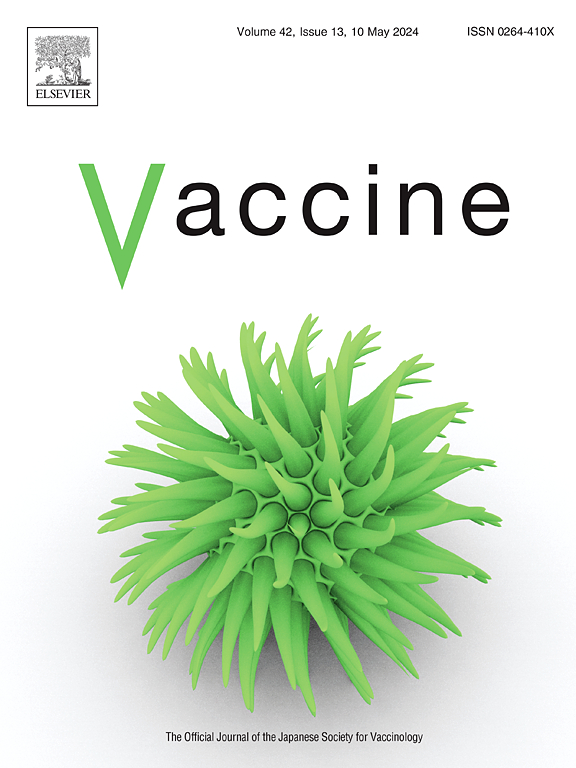Assessment of critical bioprocess parameters for broadly cross-reactive chimeric hemagglutinin influenza virus vaccines
IF 4.5
3区 医学
Q2 IMMUNOLOGY
引用次数: 0
Abstract
Antigenic drift of seasonal influenza viruses and unpredictable outbreaks with new influenza virus subtypes are a global concern that requires the development of broadly protective vaccines. We previously showed that chimeric hemagglutinin (cHA) virus vaccines are an effective strategy to elicit cross-protective immune responses to the conserved hemagglutinin (HA) stalk domain. However, the critical bioprocess parameters and vaccine quality attributes for cHA inactivated split constructs remain to be defined. Here, we developed an egg-based bioprocess for inactivated virus vaccine production with special focus on group 2 cHA viruses (cH15/3HK14N2HK14). The egg inoculum dose, incubation temperature and time, the high-speed centrifugation step, reversing the order of virus inactivation and splitting, and incorporating a sterile filtration step were thoroughly investigated. We also demonstrated that the selected virus inactivation conditions result in complete virus inactivation and defined an optimal detergent concentration in the final vaccine preparation. Using the optimal conditions, at least a 2-fold increase in HA yield was achieved for the cH15/3HK14N2HK14 virus in comparison with the unoptimized bioprocess. Vaccines produced using regular bioprocess conditions (virus inactivation first) or reversing the inactivation and splitting steps were equally immunogenic in mice, elicited antibody responses against the HA and neuraminidase (NA), and showed to be antigenically stable in different storage conditions. This study will support the development of cHA virus vaccines in a phase I clinical trial.
广泛交叉反应嵌合血凝素流感病毒疫苗关键生物工艺参数的评估。
季节性流感病毒的抗原漂移和不可预测的新流感病毒亚型暴发是全球关注的问题,需要开发具有广泛保护性的疫苗。我们之前的研究表明,嵌合血凝素(cHA)病毒疫苗是一种有效的策略,可以引发对保守的血凝素(HA)茎结构域的交叉保护免疫反应。然而,cHA灭活分裂构建体的关键生物工艺参数和疫苗质量属性仍有待确定。在这里,我们开发了一种以鸡蛋为基础的灭活病毒疫苗生产的生物工艺,特别关注2组cHA病毒(cH15/3HK14N2HK14)。对卵接种量、孵育温度和孵育时间、高速离心步骤、病毒灭活和分裂颠倒顺序以及纳入无菌过滤步骤进行了深入研究。我们还证明了所选择的病毒灭活条件导致病毒完全灭活,并确定了最终疫苗制备中的最佳洗涤剂浓度。在最佳条件下,cH15/3HK14N2HK14病毒的HA产量比未优化的生物工艺至少提高了2倍。使用常规生物工艺条件(先灭活病毒)或反向灭活和分裂步骤生产的疫苗在小鼠中具有相同的免疫原性,引起针对HA和神经氨酸酶(NA)的抗体反应,并且在不同的储存条件下表现出抗原性稳定。这项研究将支持cHA病毒疫苗的I期临床试验。
本文章由计算机程序翻译,如有差异,请以英文原文为准。
求助全文
约1分钟内获得全文
求助全文
来源期刊

Vaccine
医学-免疫学
CiteScore
8.70
自引率
5.50%
发文量
992
审稿时长
131 days
期刊介绍:
Vaccine is unique in publishing the highest quality science across all disciplines relevant to the field of vaccinology - all original article submissions across basic and clinical research, vaccine manufacturing, history, public policy, behavioral science and ethics, social sciences, safety, and many other related areas are welcomed. The submission categories as given in the Guide for Authors indicate where we receive the most papers. Papers outside these major areas are also welcome and authors are encouraged to contact us with specific questions.
 求助内容:
求助内容: 应助结果提醒方式:
应助结果提醒方式:


